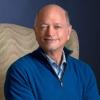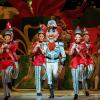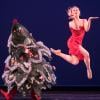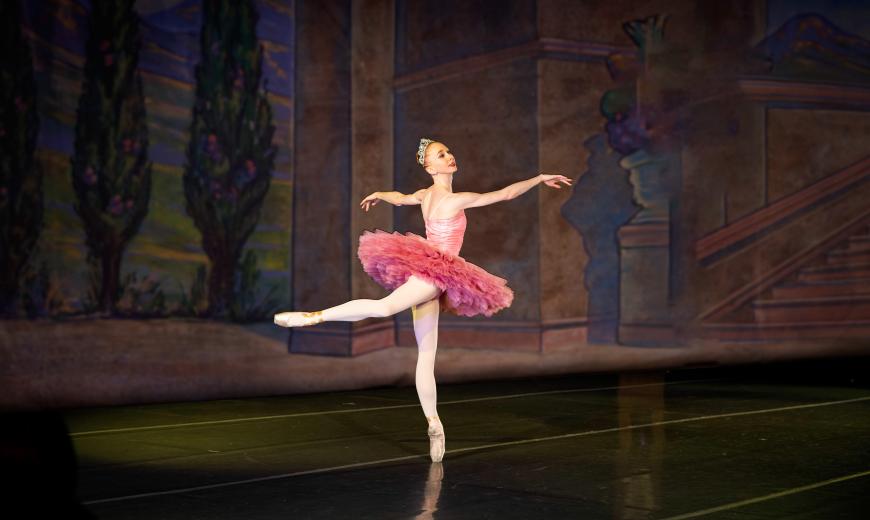
As Einstein once said, “Dancers are the athletes of God.” But can a dancer also be a theoretical physicist or, for that matter, an aeronautical engineer? If that dancer is Kelley Hashemi, the answer is decidedly yes. Indeed, Hashemi performs the roles of the Sugar Plum Fairy and Rat King in Tchaikovsky’s beloved Nutcracker on Dec. 16 and 17 with Peninsula Ballet Theatre; she’s also the autonomous systems technical lead for a NASA Aeronautics project.
This kind of double life has worked well for Hashemi: Growing up in Little Rock, Ark., she knew in middle school that she wanted to be an aeronautical engineer while at the same time studying dance at the Academy of Ballet Arkansas. Fast forward several years and Hashemi earned a Bachelor of Science from the Massachusetts Institute of Technology and then went on to receive a master’s and Ph.D. from the University of Texas.
San Francisco-based Hashemi, 35 and in her fourth season with PBT, is a rare bird, though not necessarily the avian in another Tchaikovsky classic, Swan Lake. Nevertheless, in a phone conversation with SF Classical Voice, Hashemi was delighted to discuss, among other topics, her two disparate occupations, what it takes to succeed in each field, and what the future might hold for her.
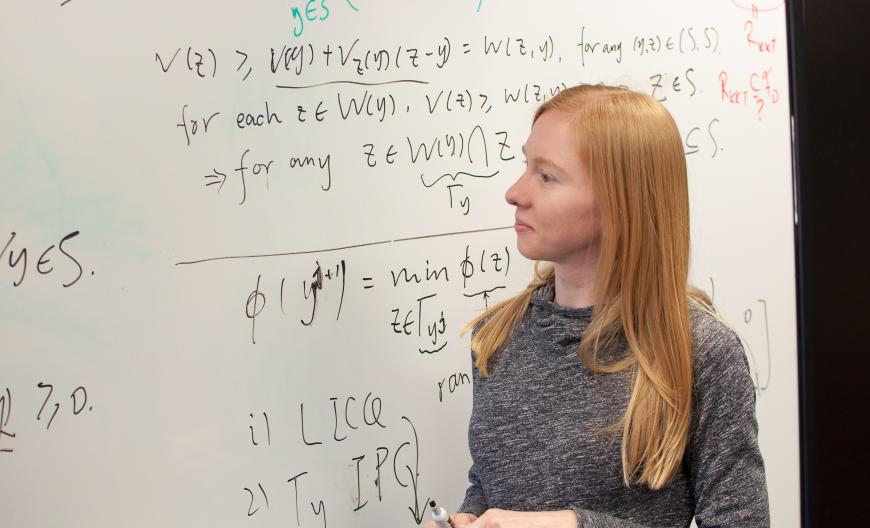
You must be the only ballerina in the world that is also an aeronautical engineer. How did that come to pass?
I don’t think so. Maybe my specific specialty [with NASA] is different, but there are quite a few who have gone on to dance education and try to keep both going. I think it’s a personality thing, and also discipline.
I wanted to be a dancer since I was 3 years old because it was something to keep [me] active; dance was my thing, and I never really stopped. There was no other activity that really took like dance did. I have siblings, both younger, and they didn’t go to dance school. My parents were musically inclined, and we all played instruments — I tried to play the oboe, but dance always stood out for me.
When it came down to [my future], I had some good schools I could go to, so I picked what would put me on the trajectory that would be most successful and most exciting. I came to prioritizing school when it came to choosing a career.
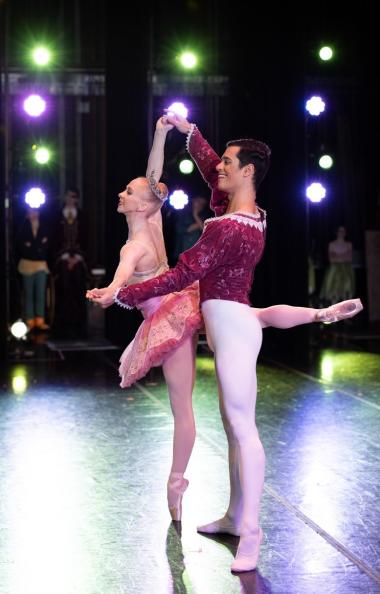
In addition to your Nutcracker roles, what others have you performed with PBT [which was founded in 1967], and what do the other dancers think of your, well, day job?
We did Carmina Burana this season in a new production that [Artistic Director] Greg [Amato] choreographed. We had live music: The singers were onstage, and the percussion was in the pit. We made it past COVID, but before COVID, I danced [the title role in] Giselle. It’s very character-driven, and it’s one of our shorter classical story ballets. It’s shorter than Sleeping Beauty or Swan Lake, and it’s a little bit less taxing.
I understand that you had hip surgery during the pandemic. Injury is a way of life in the dance world, so were you fearful that you might not be able to take to the stage again?
You’re born and your hip geometry is a certain way. I have a nice turnout and extension, and you use that for like 30 years. It was an accumulation over the years and [affects] your range of motion. My recovery was good, and I was pretty sure that I would dance again. The question was, “At what level will I dance?”
I’ve lucked out because in some ways I’ve been better than I was before surgery, so I’m glad I did it — and that I could do it during COVID. But we were worried it would get delayed. I had to go in and take a COVID test the day before, and there were no visitors allowed at that time. I had to walk in myself; then they wheeled me out by myself. I also did a solid eight months of physical therapy, and that was also during COVID — and all with a mask.
What do your fellow terpsichores think of your day job?
Most of the dancers work some other arrangement of jobs because it’s hard to support yourself, so most of them teach at other dance schools in the area. I think it’s not surprising to them, but to have my particular job is a little unusual. “Oh, it’s NASA,” and everyone thinks of astronauts and rockets, but I am a control engineer, and I work with airplanes, not with rockets or satellites. More recently I’ve been dealing with how we can introduce higher levels of automation into the airspace — how to automate more what air traffic control does.
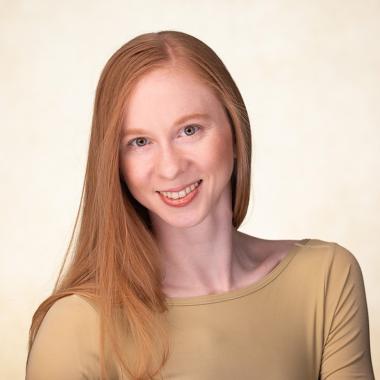
That truly sounds above my pay grade. And conversely, what do your NASA colleagues think about your onstage life?
I think they’re intrigued; they’re interested, and they come to performances more and more. I tried to keep those two lives separate for a while because you want to demonstrate that it doesn’t jeopardize your commitment, so I started sharing it more, and then that becomes a point of conversation.
There are a fair number of people at work that have significant other hobbies, so it’s not as uncommon as I thought it was, and when we did Carmina Burana, some of my co-workers sang in the choral group.
What are the similarities, if any, between aeronautical engineering and performing in a ballet? I know that physics plays a role in the art form because a dancer is dealing with acceleration, gravity, force, momentum, speed, torque, and the like, and all are integral to, say, leaps, fouettés, pirouettes, landings, and so on.
That must be true, but that is not how I approach dancing. There are so many things you have to keep track of. A foot should be here [for example], so there are too many things to think about individually. I tend to think in images: I want to create a shape that looks like I’m falling forward, so I want to use my whole body to convey that I’m going to take a step to the front rather than think about just my foot or my arm.
It also depends on the step or the role. There are some things that are fairly technical, like fouettés, so if my weight’s too far back, I need to bring my hips under a little bit. More than anything, I think it’s the style of work that’s the same — that you need a commitment over a sustained period of time to do a good job.
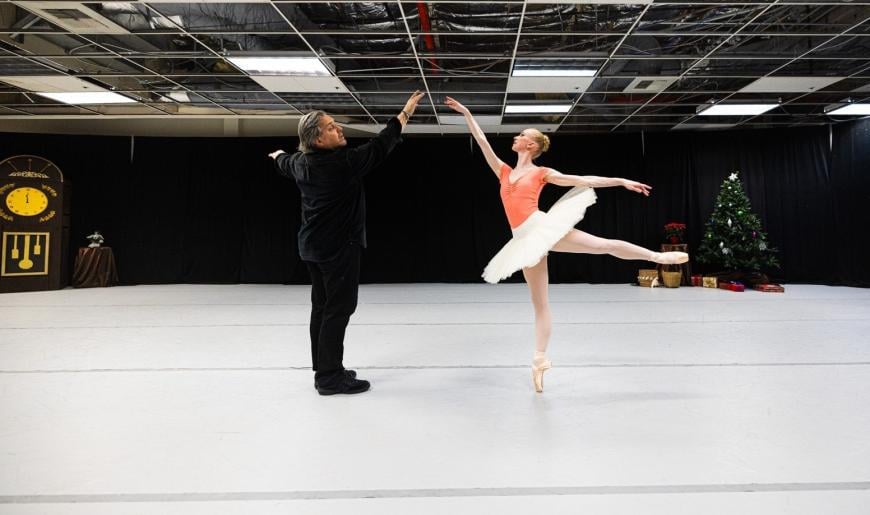
What advice would you give aspiring ballerinas or, in your case, aspiring aeronautical engineers?
Show up for work and do one thing and it’s done. With aerospace, we tend to work on large projects that go for a long amount of time. In my area, it’s an average of five years, and this current project — the increasing level of automation — is in its third year. That’s the large, grand vision.
And of course, practice. It’s not magic! I’m at my day job 40-plus hours a week, and I dance nights and weekends. This week, I’m preparing for Nutcracker [by] using my vacation time to be there for all the dress rehearsals and things. People think I have some magic schedule, but I don’t. But I do try to take class four days a week, then the rehearsal schedule will pick up as we get closer to shows, including entire weekends.
[As for both careers], I would say, “If it brings you joy, that’s what you need to pursue. It doesn’t matter if that’s not what your peers are doing; it doesn’t matter if you perceive it could be hard in the future.” That’s what you have to remember: You’re doing it because it gives you joy.
What roles would give you joy that you haven’t yet danced?
I’m hoping to get in one or two more dramatic story ballets — Don Quixote, Romeo and Juliet. They’re my goals that I hold onto, especially in this post-COVID world. All the stars have to align, though, so we’ll see.
Yes! Kelley as Kitri in Don Q, I can see it. That said, where do you see yourself in the next five to 10 years?
I am a millennial; I was born in 1987, and it was not as common to dance as long. You would be at the peak of your career in your 20s or 30s, but that narrative has shifted 10 years to the right. We’ve become more health-conscious in the industry, and I surprised myself. Past 25, there was still this whole range of my abilities that I was actually able to improve upon. I’m in much better shape now than when I was 25.
But I think somewhere between five and 10 years is when I’m going to have to shift away from dance and move a little bit more toward my NASA work. But I hope to dance until I’m 40. There’s been a huge shift since I’ve been a dancer, and people dancing into their 40s is not uncommon. I don’t ever see myself stopping my dancing in the recreational sense, but not performing as I do now.


